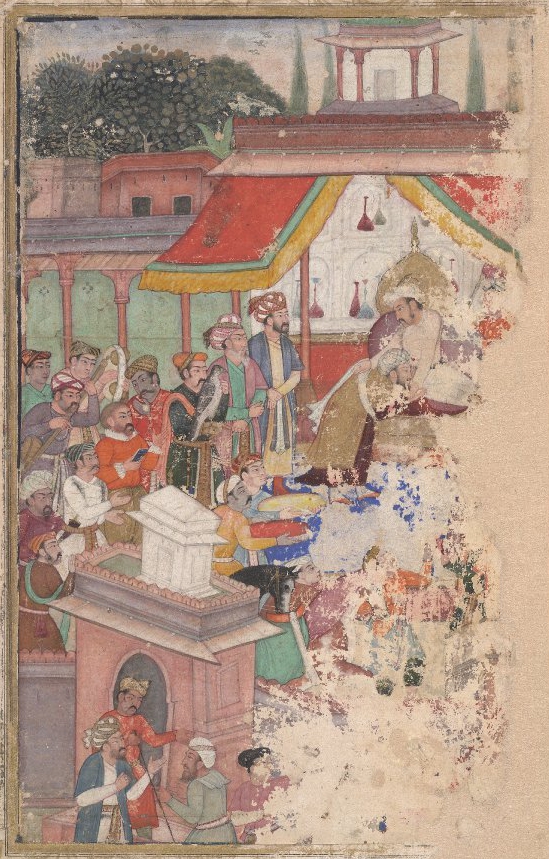Week 9: Diplomats and Communication
Diplomats represent a classic example of border-crossing intermediaries, yet political communication between early modern states and communities was not conducted by formal ambassadors alone. This week we will focus on the diverse group of actors involved in early modern diplomatic exchange in a variety of contexts, from the grand court of the Mughal emperors to the foreign quarters of Istanbul and the backwaters of New England. We will pay particular attention to the importance of everyday communications and linguistic contacts.
Required Readings
John-Paul Ghobrial, The Whispers of Cities: Information Flows in Istanbul, London, and Paris in the Age of William Trumbull (Oxford: Oxford University Press, 2013), Ch. 4: ‘Overcoming Distance in Everyday Communication’, pp. 88-121. Link.
Katherine Grandjean, American Passage: The Communications Frontier in Early New England (Cambridge, MA: Harvard University Press, 2015), Ch. 3: ‘Native Tongues’, pp. 76-110. Link.
Primary Source Texts
Thomas Roe, William Foster (ed.), The Embassy of Sir Thomas Roe to the Court of the Great Mogul, 1615-1619, as Narrated in his Journal and Correspondence (2 vols. London: Hakluyt Society, 1899), Vol. II, pp. 553-561. Link. or Link.
Seminar Questions
- Observe William Trumbull's communications network (pp. 110-1): what does it tell us about the types of go-betweens that facilitated the day-to-day business of diplomacy?
- How can our understanding of early modern diplomatic exchange be enriched by looking at sociability and everyday communication?
- What kind of go-betweens appeared on the New England frontier and which roles did they play in cross-cultural exchanges?
- Which larger conclusions can you draw from Grandjean’s account regarding the nature of boundaries and cross-cultural interaction?
- Looking at seventeenth-century Istanbul and New England: how did information cross linguistic and cultural boundaries?
- In what ways did Sir Thomas Roe act as a go-between and how is this manifested in the instructions he received (documents V and VI)?
- Through which rhetorical moves do James I (document IV) and Jahangir (documents VII and VIII) seek to transcend differences and establish mutuality?
Further Reading
Casale, Giancarlo, ‘His Majesty’s Servant Lutfi: The Career of a Previously Unknown Sixteenth-Century Ottoman Envoy to Sumatra Based on an Account of his Travels from the Topkapı Palace Archives’, Turcica 37 (2005): 43-81.
Clulow, Adam, The Company and the Shogun: The Dutch Encounter with Tokugawa Japan (New York: Columbia University Press, 2014).
Farooqi, N.R., ‘Six Ottoman Documents on Mughal-Ottoman Relations during the Reign of Akbar’, Journal of Islamic Studies 7.1 (1996): 32-48.
Gelder, Maartje van, ‘The Republic’s Renegades: Dutch Converts to Islam in Seventeenth-Century Diplomatic Relations with North Africa’, Journal of Early Modern History 19.2-3 (2015): 175-198.
Gelder, Maartje van, and Tijana Krstić, “Introduction: Cross-Confessional Diplomacy and Diplomatic Intermediaries in the Early Modern Mediterranean”, Journal of Early Modern History 19.2-3 (2015): 93-105.
Hagedorn, Nancy L, ‘“A Friend to Go Between Them”: The Interpreter As Cultural Broker During Anglo-Iroquois Councils, 1740-70’, Ethnohistory 35.1 (1988): 60-80.
Hevia, James L., Cherishing Men from Afar: Qing Guest Ritual and the Macartney Embassy of 1793 (Durham and London: Duke University Press, 1995).
Kawashima, Yasuhide, ‘Forest Diplomats: The Role of Interpreters in Indian-White Relations on the Early American Frontier’, American Indian Quarterly 13.1 (1989): 1-14.
Krstić, Tijana, 'Of Translation and Empire: Sixteenth-Century Ottoman Imperial Interpreters as
Renaissance Go-Betweens', in: Christine Woodhead (ed.), The Ottoman World (London and New York: Routledge, 2012): 130-142.
Massarella, Derek, ‘Envoys and Illusions: The Japanese Embassy to Europe, 1582-90, “De Missione Legatorvm Iaponensium”, and the Portuguese Viceregal Embassy to Toyotomi Hideyoshi, 1591’, Journal of the Royal Asiatic Society, Third Series 15.3 (2005): 329-350.
Rothman, E. Nathalie, ‘Interpreting Dragomans: Boundaries and Crossings in the Early Modern Mediterranean’, Comparative Studies in Society and History 51.4 (2009): 771-800.
Sood, Gagan, ‘The Informational Fabric of Eighteenth-Century India and the Middle East: Couriers, Intermediaries and Postal Communication’, Modern Asian Studies 43.5 (2009): 1085-1116.
Wills Jr., John, Embassies and Illusions: Dutch and Portuguese Envoys to K’ang-hsi, 1666-1687 (Cambridge, MA: Harvard University Press, 1984).
Windler, Christian, ‘Diplomatic History as a Field for Cultural Analysis: Muslim‐Christian Relations in Tunis, 1700‐1840’, The Historical Journal 44.1 (2001): 79‐106.

